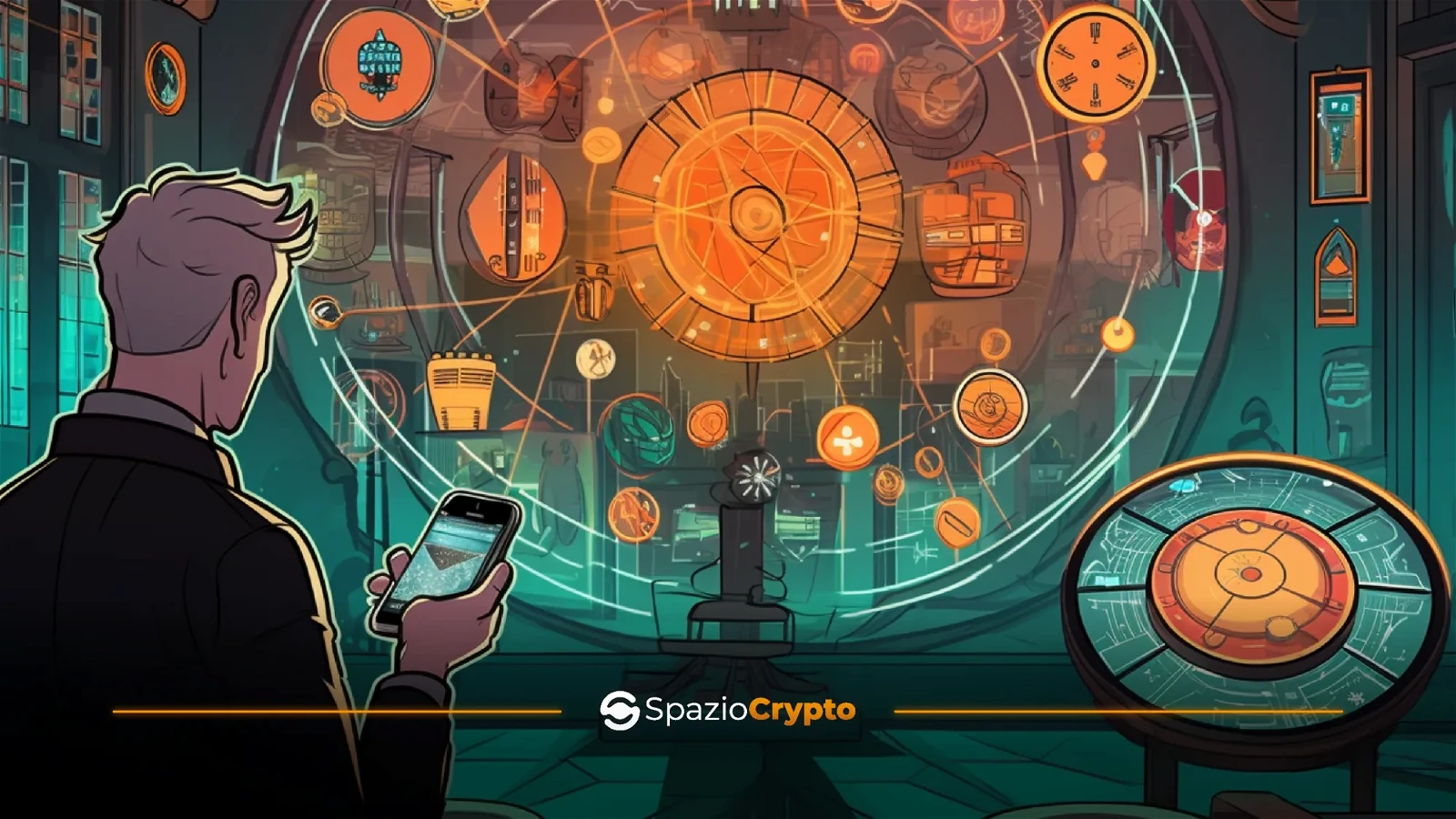
What is a DApp? Decentralised Applications
A DApp, or Decentralised Application, is a software application that runs on a decentralised network, such as the blockchain.

A DApp, or Decentralised Application, is a software application that runs on a decentralised network, such as the blockchain.

Get the latest news, learn from experts, discover new tools, and find inspiration right in your inbox.
No spam. Unsubscribe anytime.
A powerful documentary on how Bitcoin and blockchain are reshaping money, power, and geopolitics—from El Salvador’s Bitcoin experiment and Europe’s regulatory revolution to the rise of decentralized finance and the new global financial order.
With the advent of the blockchain and smart contracts, DApps are revolutionising traditional applications, offering a new perspective on decentralisation, transparency and user autonomy.
So, what is a DApp?
A DApp, or Decentralised Application, is a software application that runs on a decentralised network, such as the blockchain. DApps are designed to operate without a central controlling authority, using smart contracts to automate transactions and ensure the security and transparency of transactions. They offer users greater control over their data and greater resistance to censorship than traditional centralised applications.
The Concept of Decentralisation
Decentralised applications (DApps) are rooted in the concept of decentralisation, a fundamental principle that contrasts the traditional model of centralised applications. But what exactly does decentralisation mean in this context? In simple terms, decentralisation refers to the distribution of control and authority over a network or system, rather than being concentrated in central hands. In DApps, this translates into a distributed architecture in which no single entity or authority holds complete power over the platform. Instead, decisions and operations are managed through a peer-to-peer (P2P) network by exploiting blockchain technology. Often, DAPs are managed by DAOs (Decentralised Autonomous Organisation), which make decisions in a hypothetically communal, democratic, and decentralised manner.
This concept of decentralisation offers several advantages. First of all, it reduces vulnerability to attacks and manipulation, since there is no single point of control that can be compromised. A possible information attack would have to be carried out by sabotaging at least 51 per cent of the nodes to be effective. It also promotes transparency, as all transactions and operations are immutably recorded on the blockchain, accessible to anyone who wishes to verify them. On the other hand, decentralisation also presents challenges and complexities. For example, managing decisions may require a more complex process, involving various actors within the network.
Architecture of a DApp
To fully understand how decentralised applications (DApps) work, it is essential to examine their architecture, which differs markedly from that of traditional centralised applications.
Types of DApp
Decentralised applications (DApps) can be classified in different ways based on their structure, functionality and use of the blockchain. Here is an overview of the main types of DApps:
Regardless of the type, DApps are gaining popularity in several industries due to their ability to provide security, transparency and autonomy to users.
Disadvantages of DApps
Decentralised applications (DApps) offer a number of advantages over traditional centralised applications. These advantages stem from their decentralised architecture and the use of blockchain technology. At the same time, however, they also have a number of inherent limitations and issues.
Davantages of DApps
Below, we will look at some of the main advantages of DApps:
These are just some of the main benefits offered by DApps. However, it is important to note that DApps also present challenges and limitations.
Challenges and Limitations of DApps
Despite their many advantages, decentralised applications (DApps) also face several challenges and limitations that may affect their adoption and effectiveness. Let's examine some of these challenges:
Tackling these challenges is critical to the success and large-scale adoption of DApps. The cryptocurrency community is actively working on solutions to improve the scalability, usability and interoperability of DApps, with the goal of making blockchain technology more accessible and practical for users around the world.
Practical Examples of DApps
To fully understand the potential of decentralised applications (DApps), it is useful to look at some practical examples of success in different industries. Here are some areas where DApps are making significant progress:
These are just a few examples of how DApps are transforming various industries through decentralised innovation. With the continued development of blockchain technology and the increasing adoption of DApps, it is likely that we will see further innovations and applications in the future.
In conclusion, decentralised applications (DApps) represent a milestone in the evolution of blockchain, offering an innovative and transformative perspective on the way we conceive and use digital applications. Through their decentralised architecture, DApps promote security, transparency and user autonomy, reducing dependence on centralised intermediaries and opening up new possibilities for innovation in a wide range of sectors.
At Spaziocrypto, despite the challenges and limitations that still need to be addressed, we believe that the potential of DApps to revolutionise industries and improve user experiences is undeniable. With the continued development of blockchain technology and the increasing adoption of DApps, we are set to see further advances and innovations that will radically transform the way we interact with digital applications in the near future.
Read Next
AI NFT: The Future of Web3 Collections
AI NFT transforms digital assets into interactive and intelligent experiences, revolutionising the Web3.
Peer-to-Peer Networks: The Heart of the Web3
Peer-to-peer networks are the basis of Web3: they decentralise, reduce costs and increase security and resilience.
Layer 3 Blockchain: The Bridge to the Web3
Layer 3 takes blockchain beyond performance and cost: connectivity, interoperability and real Web3 adoption.
What are dApps? Decentralised Apps on Blockchain
Learn what dApps are, how they work, their benefits, risks and potential use cases on blockchain.